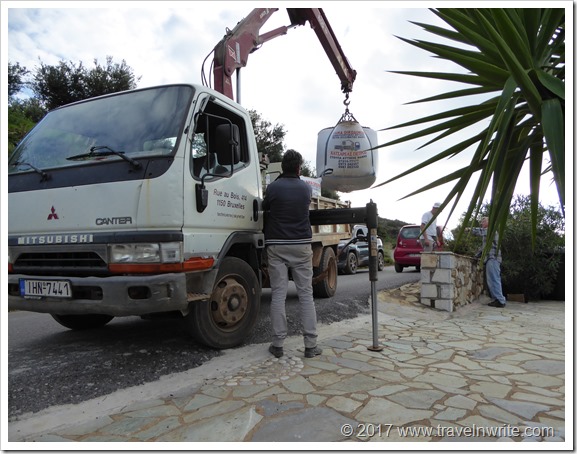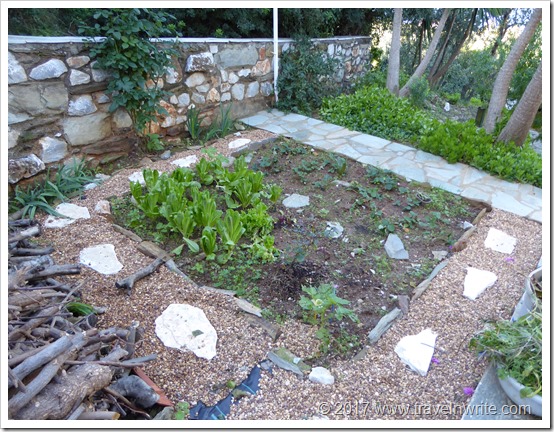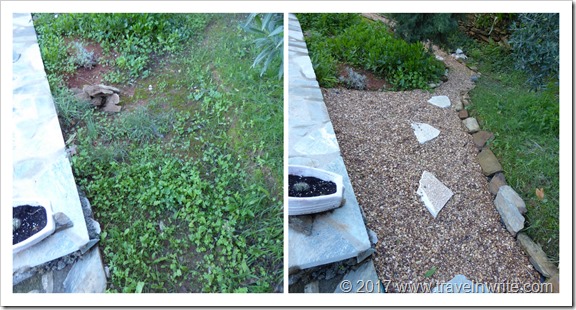In this part of the world, life does give you lemons ~ the good kind, of course! And when you think of life in the Mediterranean doesn't images of olive and lemon groves come to mind?
 |
| Lemons growing at The Stone House on the Hill |
Friends who know me well can attest to my daydreams of Mediterranean life and my love affair with olive and lemon trees. Over the years in our American Pacific Northwest life, I’ve purchased and managed to kill off more potted lemons and olives than I want to admit in my quest of having a taste – however small – of Mediterranean life.
 |
| The Lemon Tree Patio - The Stone House on the Hill |
Now here I am living in the Mediterranean surrounded by olive groves and have my own enormous lemon tree. It shades and shelters the patio named after it: the Lemon Tree (Wine)Patio. The scent of lemon blossoms are wafting in the garden and lemons are being grown at a pace with which we can’t keep up. . .roasted Greek lemon chicken and potatoes, lemon cake, lemon bread pudding, lemonade and lemon-water are all on the menu.
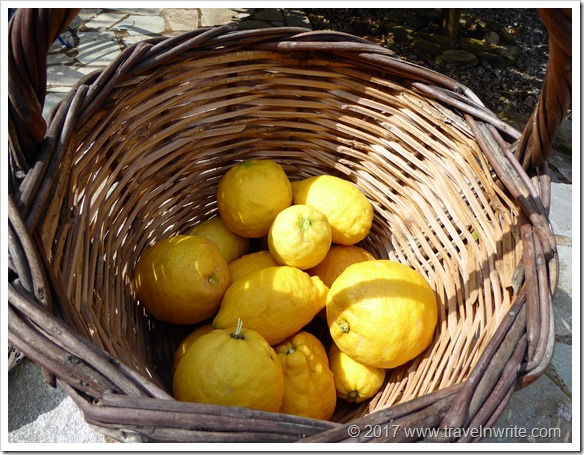 |
| Lemon harvest - it is spring in Greece |
We’ve stunned our local Greek and British friends when we tell them that a single – small – lemon back in the U.S. Northwest was selling for $1 at our local market when we left two weeks ago. Here, where so many are grown, that we are having a tough time giving them away!
I’ve appreciated the suggestions from many of you on ways to use the lemons. I’ve got a growing file of lemon-flavored dishes and desserts to try. One friend suggested preserving them and taking them back to the States – nice thought but those agriculture-sniffing guard beagles at the airport would likely nail me even if they were in a jar - the smell is too aromatic to stay contained in a jar.
A friend told us the story of a Greek lady going to visit her son living in Florida who packed some fresh lemons in her suitcase for him. Not only was she ‘caught’ by the US authorities and her citrus gift confiscated but she was fined several hundred dollars.
We'll just have to 'preserve' them for use here and one of my favorite ways of doing that is to make Limoncello. . .
LIMONCELLO
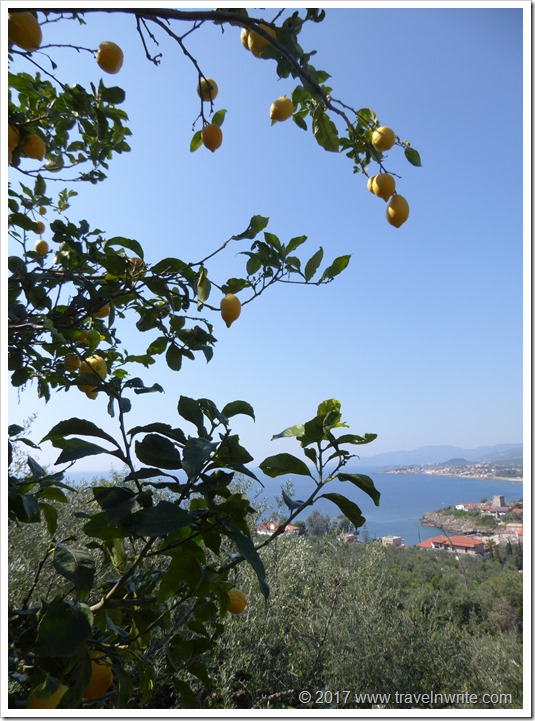 |
| The Messinian Bay from The Stone House on the Hill |
Limoncello is a luscious liquor that can be consumed alone as either an aperitif or digestivo, or can be splashed into champagne or served in tonic water, think L and T vs. G and T. Or it appears in recipes for main dish flavoring or as a dessert; it is a great topping on vanilla ice cream!
I’d wanted to tell you about the origins of Limoncello but, as 'frequently happens in these circumstances, the truth is vague and the hypothesis are many and interesting,’ according to one Limoncello source. For example:
 |
| This year's crop - lemons anyone? |
One story tells that Limoncello was created at the beginning of the 1900’s in a small boarding house on the island of Capri where
Maria Antonia Forace cared for a garden of lemon and oranges. Her nephew, post-war, opened a bar nearby and served old ‘nonna’s’ recipe. Another version says fishermen and farmers used the liquor to keep warm since the Saracen invasion (the first half of the 8th Century). Others say it was invented by friars inside a monastery to ‘delight themselves between prayers’. Another credits an innkeeper in Capri.
We are probably safe in saying its roots are somewhere in the Sorrento, Amalfi, Capri area of Italy. We know that
Massimo Canale registered the trademark “Limoncello” in 1988. And we know it is easy to make at home. . .if you have the patience. . .
Here's the recipe I use:
 |
| Making Limoncello |
What you will need:
* 15 –20 lemons – clean, unwaxed with the thicker and more unblemished the skin the better. They should give off that ‘lemon’ scent.
* 2 (750-ml) bottles of 80-proof vodka. Some say that cheaper is better and others say to buy higher quality so it doesn’t freeze when you chill the liquor in the freezer. If you can find
Everclear, us it instead of vodka because it is pure liquor and doesn’t have any sugar in it.
* 2 – 3 cups water
*2 – 4 cups sugar (a 1:1 ratio of sugar to water makes a classic simple syrup, but use more sugar if you want yours a little thicker or sweeter. Less if you want it a bit tart like we prefer it.)
* For this recipe you also need a larger 2 – 3 litre) glass jar with sealed lid. Wash, rinse and sterilize it. (Old-fashioned sun tea jars work well or olive jars as in our case in Greece).
* You’ll also need some nice glass bottles in which to put your brew once it it done.
 |
| Zesting the lemons - step one |
Step 1: Lemon in Alcohol
1. Wash and dry the lemons. Cut off any skin blemishes, spots, stems, and ends.
2. Remove the peel from the lemons with a knife, peeler or fine grater/zester. Avoid the bitter white pith. If any white pith remains on the back of a peel scrape it off as it will make the Limoncello bitter.
3. Put the peels in a glass jar and add the vodka and/or Everclear, leaving at least two inches at the top.
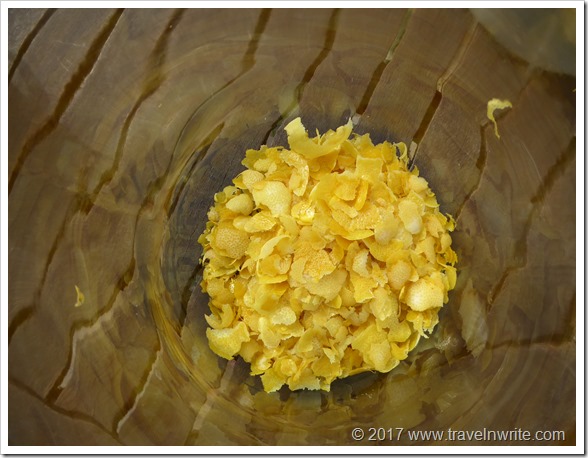 |
| My lemon peels |
4. Leave the lemons to steep in the jar in a cool, dark place until the peels lose their bright color, at least two weeks. (I have left mine for 2 – 3 months before adding the simple syrup, some recipes say leave it at this stage for a month and add simple syrup then let the mixture set for another month.) Every couple of weeks swirl the peels around in the jar to mix up the oils in the alcohol.
Step 2: Make the simple syrup and add it
1. Put the sugar and water in a saucepan, stir and slowly heat until it turns clear and all the sugar is dissolved completely. Let the syrup cool.
2. Put the cooled syrup in the jar with the lemons (if you used a small jar you may need to divide the batch into two at this step).
3. Put the jars back in the dark place for at least two weeks (here, is where some say to let it macerate longer).
 |
| Key ingredients of Limoncello |
Step 3: Strain and bottle
1. Strain out the lemon peels through a coffee filter or cheesecloth and pour the Limoncello into another contrainer. Squeeze to remove all the vodka and oils that you can from the peels before discarding.
2. Stir the liquid with a clean plastic or wooden spoon.
3. Put the liquor in the clean bottles, seal tightly and let it sit for at least a week before using. For the best flavor when drinking it straight, store it in your freezer. It shouldn’t freeze because of how much alcohol is in it. It is best served ice cold.

.
That’s it from
The Stone House on the Hill this week. I started my batch of Limoncello the same day that we set out on The Road to Residency here in Greece. We met with our attorney and turned over our document packets (that you read about a few weeks ago) to her on Sunday morning and I started the Limoncello later in the afternoon. Tick, tock the clock has started officially running for both. . .
Until next week, thanks for being with us and safe travels to you all.
Linking this week with:
Through My Lens
Our World Tuesday
Wordless Wednesday
Travel Photo Thursday
Photo Friday
Weekend Travel Inspiration


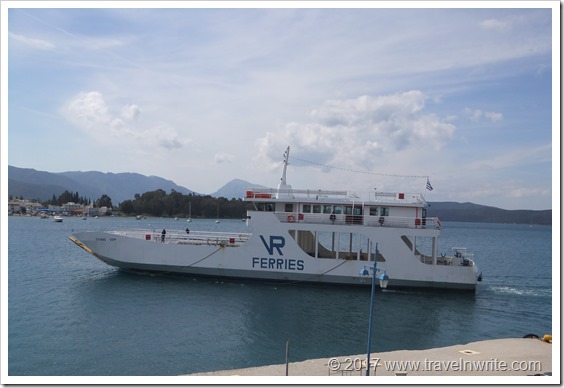
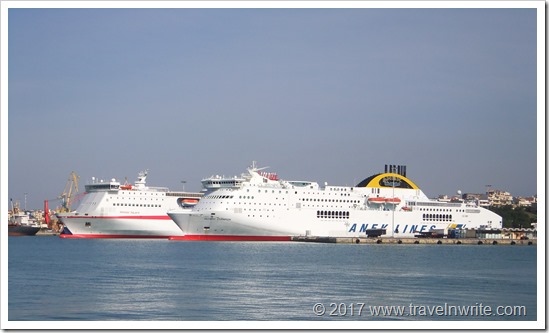


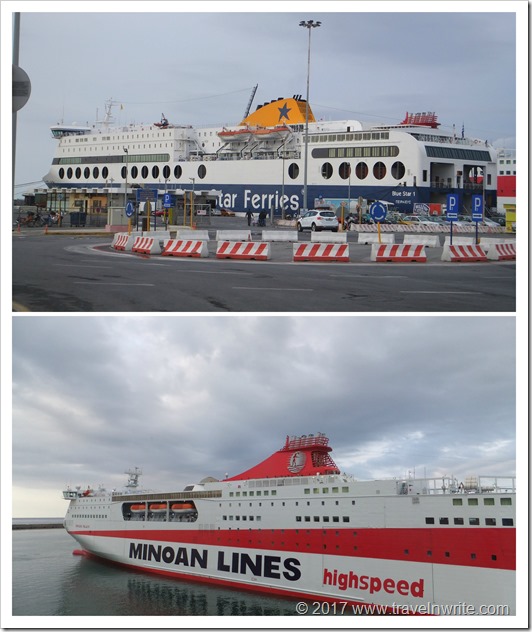
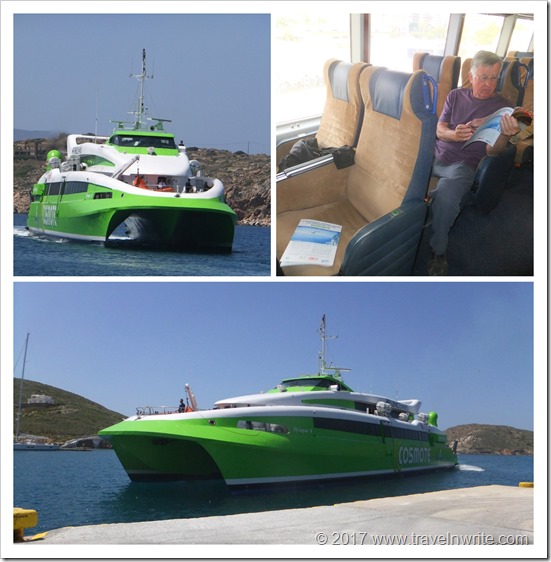


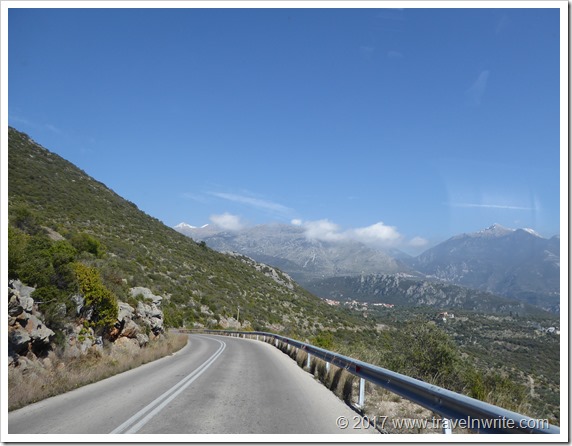

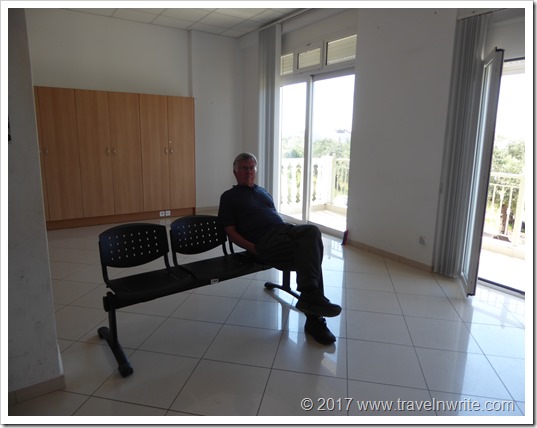








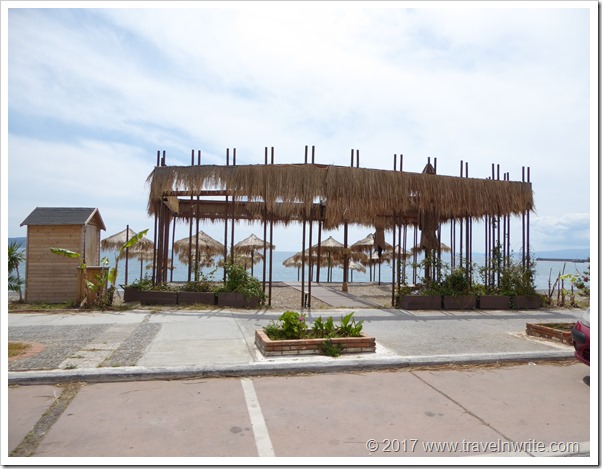

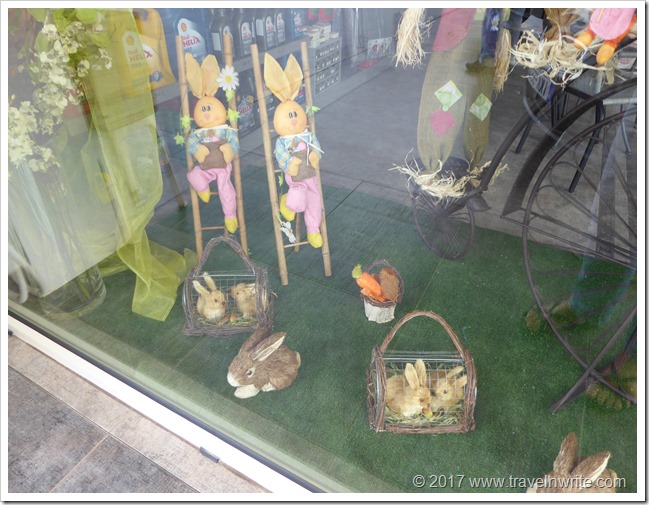
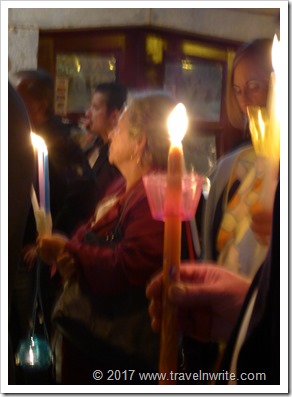
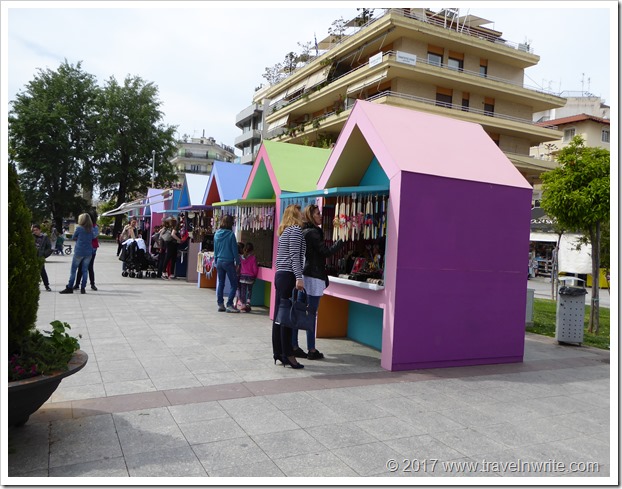







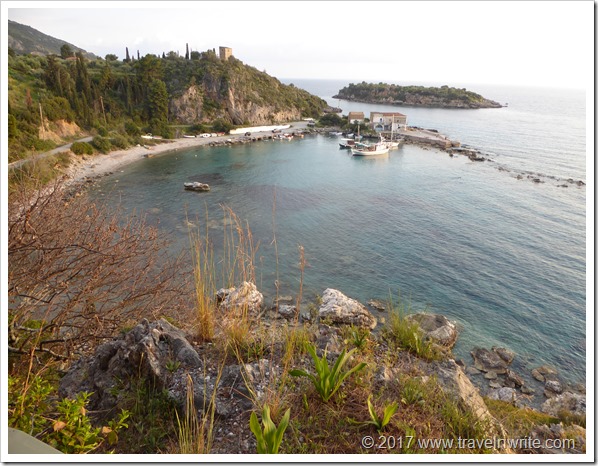
















![IMG_0215 [716250] IMG_0215 [716250]](https://lh3.googleusercontent.com/-dfmohVwpoKs/WLs20fonZOI/AAAAAAAASYI/IAMTda4I67k/IMG_0215-716250_thumb5.jpg?imgmax=800)


